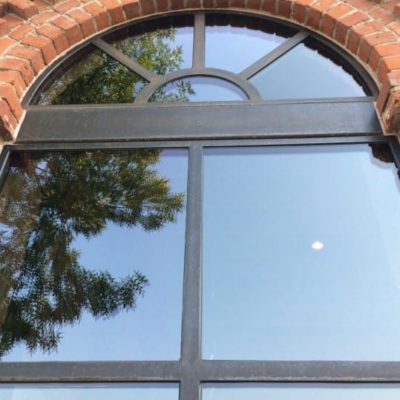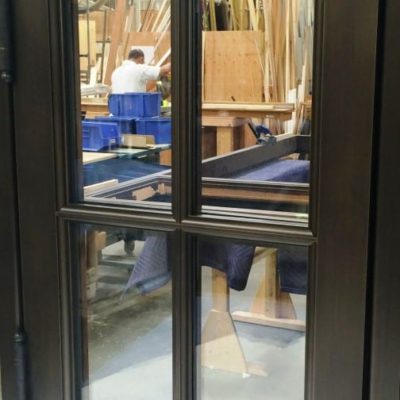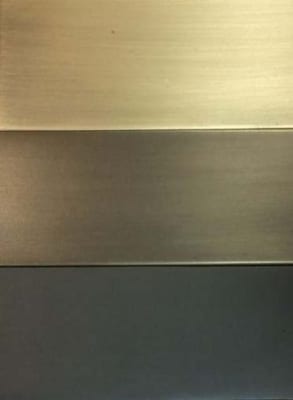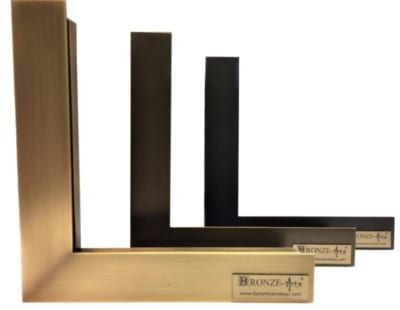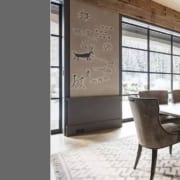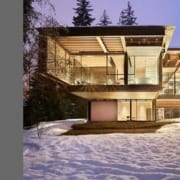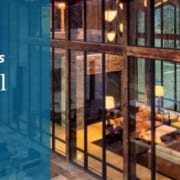A Guide to “Living” Patina Finishes for Architectural Bronze Windows
“There’s no way around it – architectural bronze will change as it ages. It’s a matter of perception: whether the change is expected and welcome – or not.”
Bronze is a classic material – timeless and yet so changeable.
The great bronze statues of antiquity didn’t start out looking the way they do today. Nature works its own magic and the bronze changes over time. It’s a living finish.
This is true for bronze windows and doors as well. Architectural bronze windows and doors will change as they age. So the question is, “What are the expectations around the change?” How much change is welcome and expected over the long-term. And, how can you mitigate the change over time — or do you even want to?
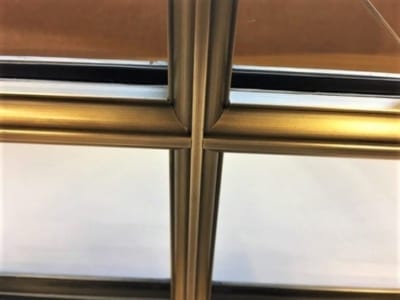
Hand-Applied Artisan Patina Finish on Bronze
The key is to understand everyone’s expectations around Bronze for the long term.
The main way to manage the natural process over time is to select a patina based on the desired aesthetic and environment. Then, to plan for maintaining the bronze cladding over the long-term — which is discussed in a different article (click here).
Understanding a little about the art and science of Bronze patinas can help you select the ideal finish, for both longevity and appearance. Here are a few guidelines for working with architectural bronze from our experience with windows and doors.
Natural Patinas Develop with Time and Exposure
Patina finishes may develop naturally over many years, or they can be created and enhanced through hand-crafted artisan techniques mixed with science. In some cases, patina finishes can even assume new surface textures. Some changes are desirable – others not so much.
A patina is actually considered tarnish, and can refer to any change in surface finish of a material through age and exposure. Patina can occur on metals, wood, leathers and other materials.
Natural patinas are beautiful finishes evolved over many years and decades from exposure to the elements. A natural patina finish contains various chemical compounds, including oxides, carbonates, and sulfates formed on the surface due to exposure to elements in the atmosphere.
You don’t have to do anything to get a natural patina. Just leave the Bronze alone and nature will take care of the rest.
If the patina is left to age naturally, expect to have a range of different finishes, textures and colors.
The natural patina finish is actually a protective layer for the copper and other compounds in bronze. If you’re familiar with Corten steel, this is the same principle. (This is different than natural rusting on steel, which can also be considered a patina finish; however the rust does not protect the iron and instead causes breakdown of the steel.)
Natural patinas are a result of organic changes. As such, the colors will vary over the years from shiny or raw, from brown to black and eventually different shades of green. The percentage of copper in the material will play an important factor to the rate of change and resulting colors.
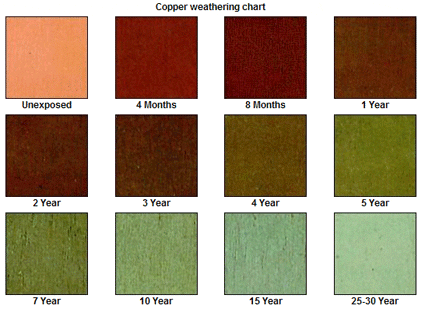
Copper Weathering Chart: An example of the natural weathering of copper (one of the components in architectural bronze).
Architectural bronze is a metal alloy that consists of copper, iron, lead, and zinc. The level of copper determines the high resistance to corrosion, and the level of zinc contributes to the hardness and tensile strength of the material.
As an alloy of several different compounds, architectural bronze will change at a different rate than standalone copper.
(Photo via Crescent City Copper)
Special Considerations with Natural Patinas on Bronze Windows and Doors
The rate of change or finish of the patina will depend on the environment in which the bronze is placed—whether there is clean air or industrial air, humidity, moisture, exposure to salt, and other similar factors.
Natural patinas will develop faster in coastal and marine environments than on dry land or inland locations. We suggest discussing your goals and building location with your supplier if a natural patina is in your sights.
Hand-Applied Artisan Patina Finishes
Hand-applied patina finishes seem to provide a bell-weather for developing trends in architectural finish preferences.
This photo shows a very light, almost natural patina finish on thermally broken bronze window developed for a boutique hotel lobby entrance.
These light patina requests seem to be a growing trend. It wasn’t that long ago that a patina finish on bronze would be called “Oil Rubbed Bronze” and everyone knew pretty much what it was going to look like. That’s no longer the case.
Medium to dark patinas can help in hiding a multitude of sins – inherent defects in the bronze substrate, some of the minor striations from the extrusion process and, of course, the welding of the miter joins.
New application techniques and new welding alloys have changed the aesthetic outcomes of light patinas on bronze. Expectation management remains very important for responsible manufacturers, but there are fewer inherent pitfalls that must be addressed in order for everyone to make a fully informed decision.
The choice of patina today is more clearly an aesthetic preference. Some light patina finishes can appear too consistent, or in some cases cloud the deep luster of the bronze itself – one of its most desirable features for many people. The mottled effect of a naturally-aged bronze surface, encouraged with a medium patina, is often more preferable and blends more consistently with the overall design intent of the envelope. The inherent inconsistencies are a valued element of the aesthetic. The finish is more organic.
Depending on what the Owner wants and expects with a hand-applied “living” finish, it’s worth asking your bronze window fabricator plenty of questions so you can best understand your patina choice.
Gallery: Examples of Patina Options on Bronze Windows
- Natural Aged Patina on Bronze Window
- Medium-Dark Patina on Architectural Bronze
- Welding with Light Patina Finishes
- Dark Bronze, Medium Bronze, Light Bronze – Bronze Arte Artisan Finishes
- Standard Patina Finishes on Bronze Window Profiles
Patinas are like your kids – you never really know how they’re going to turn out.
The hand-applied patina finishes on Bronze are often called “Living Finishes.” For good reason. They change over time, ideally assuming a naturally-aged aesthetic and subtle mottled character. It’s worth understanding this behaviour so the entire design team is prepared for the changes in appearance.
If hand-applied patinas are not maintained, eventually the organic nature of the material will take over.
Clients may expect Bronze to be “maintenance-free.” It won’t be – unless you actually do just want to let it do its thing, come what may. Bronze will oxidize over time.
If the design intent is to preserve something close to the original patina appearance, it will require maintenance. That is the nature of the material. The rate of change in the patina can be mitigated, but you can’t stop nature. (You’ll find practices for maintaining bronze outlined in our article: The Maintenance-Free Myth: What to Expect with Architectural Bronze Windows & Living Patina Finishes)
Variables to Consider
How the bronze patina changes over time will depend on several variables.
- Composition of the bronze
- Patination or other protective treatments applied at the factory
- Weather
- Location and exposure to rain, sun, and other climatic conditions
- Atmospheric pollutants
- Scheduled maintenance/cleaning
- Adjacent materials including residual core materials
Understanding what to expect with Bronze and Bronze patinas is as important as with any other variable architectural material, maybe more so given the relative size of the investment. Expecting Bronze to remain unchanged is not realistic. Talk about it. A lot.



